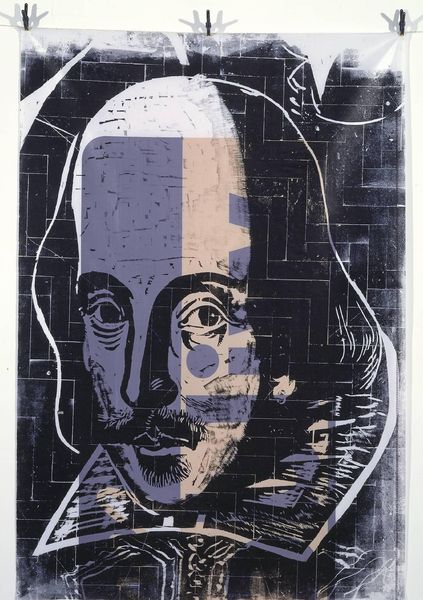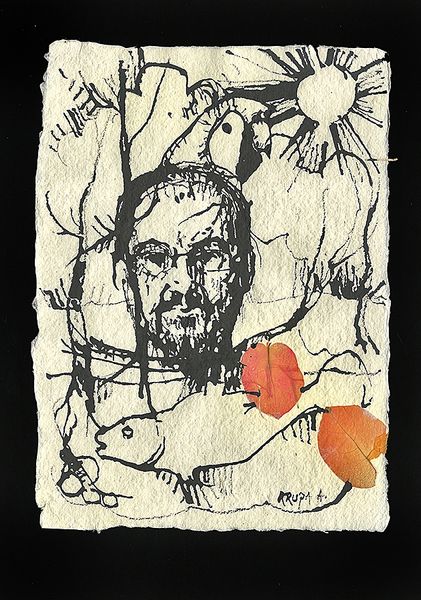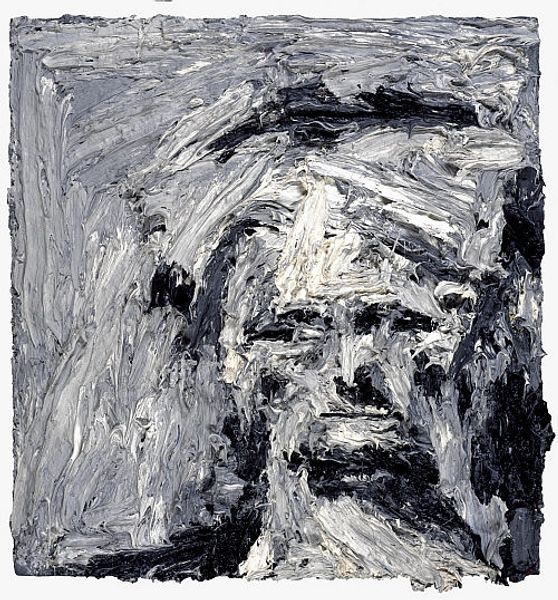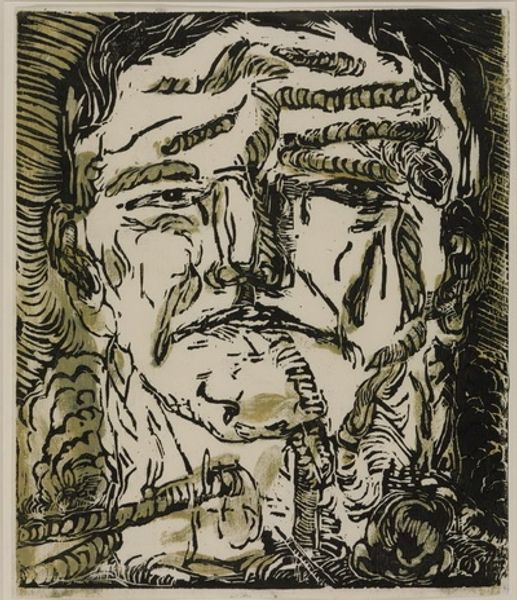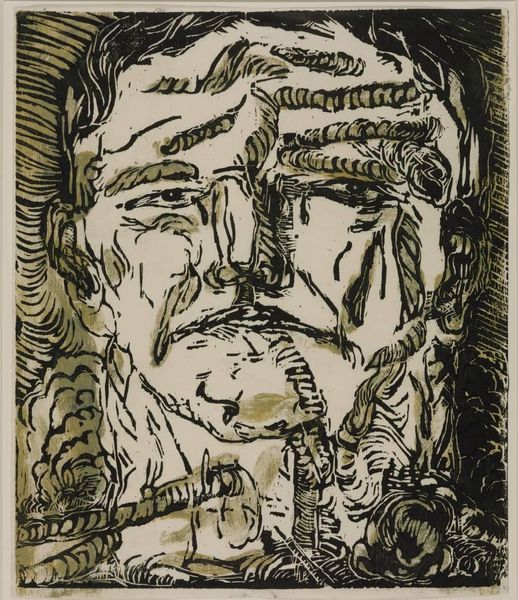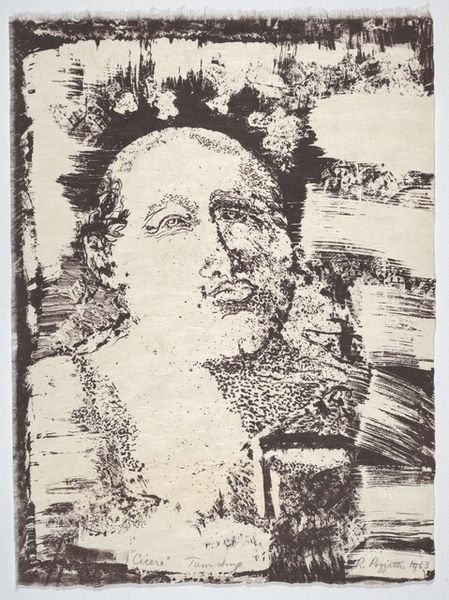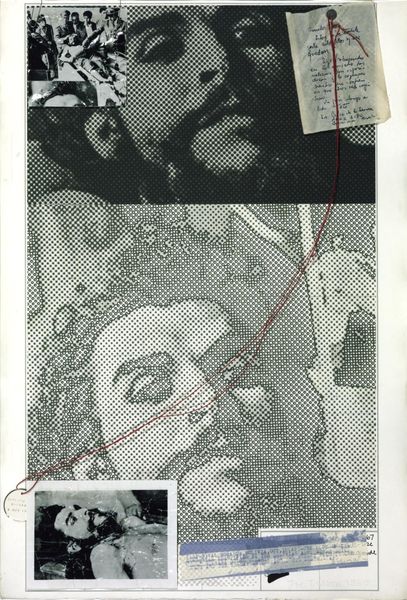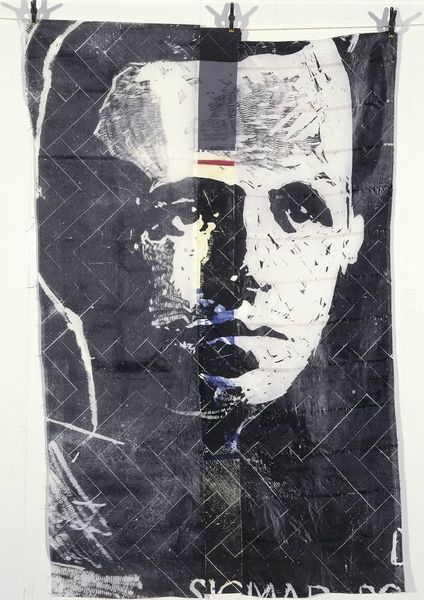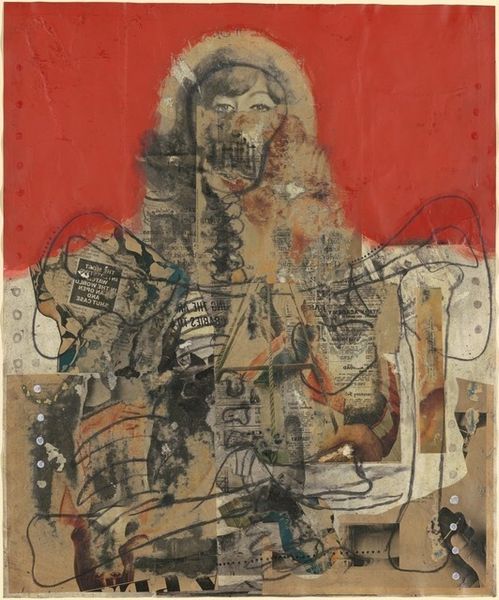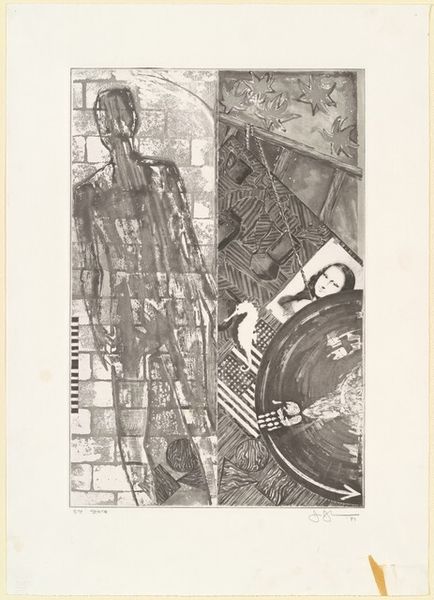
Copyright: © Thomas Kilpper | CC-BY-NC-ND 4.0 DEED, Photo: Tate
Curator: Thomas Kilpper's intriguing work, "The Ring: Ho Chi Minh," currently residing in the Tate Collections, presents us with a compelling image. Editor: The stark contrast immediately strikes me. The interwoven textures create a captivating play of light and shadow, almost like a deconstructed portrait. Curator: Indeed. Kilpper's engagement with political figures through art serves as a powerful commentary on historical narratives and their representation in contemporary culture. The woodcut technique itself adds another layer. Editor: The textures do seem to fragment the image, challenging our perception of Ho Chi Minh. I wonder if this disruption serves to question his legacy. Curator: Precisely. Kilpper is prompting us to actively engage with the complexities of power and historical memory. Editor: It's definitely a piece that lingers in the mind, prompting reflection on the intersection of art, history, and political discourse. Curator: An artwork that offers an incisive meditation on the construction and interpretation of historical narratives.
Comments
tate 8 months ago
⋮
http://www.tate.org.uk/art/artworks/kilpper-the-ring-ho-chi-minh-p78543
Join the conversation
Join millions of artists and users on Artera today and experience the ultimate creative platform.
tate 8 months ago
⋮
This is one of a series of unique prints generated from a site-specific work created in an office block on Blackfriars Road, in the London borough of Southwark. Orbit House was abandoned and scheduled for demolition when Kilpper gained access to the building in 1999. He carved a giant woodcut into the mahogany parquet covering the tenth floor, comprising an area of approximately 400 square metres. The woodcut depicted a boxing ring surrounded by an audience of some eighty characters whose names were cut around the edge of the image. The artist derived the portraits from photographs and etchings which he made into slides and projected onto the floor before carving the relief with chisels and a chainsaw. He then made a succession of prints, constituting individual portraits, on a range of new and found materials. He used old curtains left in the building, often sewing several pieces together to make one large, rectangular support. Paper sources include advertising hoarding paper and sheets of purple ultra violet polythene film which Kilpper discovered screening windows in some rooms of the building. The herringbone texture of the parquet features strongly on all the uncut areas of the prints which were executed mainly in black ink using a specially-made giant, cement-filled roller. During the exhibition of the work, the prints were suspended on washing lines above the carved floor. Daylight from the surrounding windows filtered through their semi-translucent supports. Visitors would walk on the carved parquet while looking at the prints. A huge banner was printed from the entire surface (The Ring, collection the artist) and hung on the outside of the building for the duration of the installation. Tate owns twenty-one prints, twenty made on fabric (Tate P78537-P78556) and one on paper (Tate P78557). The Ring: Fight On (Tate T07671) is a section of the parquet flooring preserved before the building’s demolition in late 2000.
